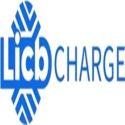Notifications

8 minutes, 9 seconds
-24 Views 0 Comments 0 Likes 0 Reviews

As the world shifts towards cleaner energy and electric vehicles (EVs) become more prevalent, the demand for efficient and reliable charging infrastructure is soaring. One key technology driving this transition is the Open Charge Point Protocol (OCPP). In particular, OCPP 1.6 has emerged as a crucial standard for ensuring smooth communication between China EV chargers and central management systems (CMS), enabling seamless integration and management. This article explores the features, benefits, and impact of OCPP 1.6 in the rapidly evolving EV charging landscape, highlighting how it aligns with the growing demands of the industry.
The Open Charge Point Protocol (OCPP) 1.6 is an open, standardized communication protocol that ensures interoperability between EV chargers and central management systems, irrespective of the manufacturer. This means businesses, fleet operators, and charge point owners can use chargers from different manufacturers while still managing them through a single, unified platform—free from being locked into proprietary solutions.
OCPP 1.6 facilitates the smooth exchange of data between EV chargers and their backend systems, enabling businesses to efficiently monitor, manage, and optimize the charging process. By promoting an open standard, OCPP encourages innovation and competition within the EV charging market, offering businesses the flexibility to select the hardware and software solutions that best meet their needs.
The main goal of OCPP is to prevent businesses from becoming dependent on any single manufacturer. This open approach allows the development of a wide range of charging solutions, encouraging both hardware manufacturers and software developers to contribute to the growth of the industry.
OCPP 1.6 ensures seamless compatibility between a wide range of EV chargers and central management systems. This flexibility allows businesses to choose chargers from different manufacturers, all while ensuring that they can be managed through a common platform. This capability makes scaling charging infrastructure easier, as businesses are not limited to one provider's solution.
With OCPP 1.6, businesses gain access to powerful management tools that allow remote monitoring and control of their entire charging network. Centralized dashboards provide real-time insights into metrics such as charging station status, energy consumption, and user activity. This centralized control leads to proactive maintenance, quicker troubleshooting, and more efficient use of resources, ultimately optimizing the charging experience.
OCPP 1.6 enhances the customer experience by offering features like load balancing, user authentication, and efficient billing solutions. These capabilities ensure smoother and more reliable charging, minimizing the risk of overloads or power disruptions. By offering a seamless and convenient charging experience, businesses can encourage customer loyalty and satisfaction.
OCPP 1.6 helps businesses manage their charging infrastructure more cost-effectively. Through load balancing, businesses can reduce the strain on infrastructure during peak times, avoiding costly power surcharges. Additionally, remote monitoring and management cut operational costs by streamlining maintenance and ensuring the system operates efficiently.
With the rapid growth of the EV market, businesses need a charging solution that can evolve with the times. OCPP 1.6 provides a future-proof solution by supporting easy system upgrades, the integration of new technologies, and the addition of new features without disrupting the entire infrastructure. By adopting OCPP 1.6, businesses can align with sustainability trends, attracting eco-conscious customers while contributing to a cleaner future.
Moreover, installing OCPP-compliant chargers opens up new revenue opportunities, such as attracting customers to retail locations, restaurants, or hotels by offering convenient charging solutions.
OCPP 1.6 brings advanced functionalities to the table that optimize the charging process. The main use cases for smart charging include:
Load balancing ensures that electricity demand is evenly distributed across multiple charging stations, preventing grid overload and minimizing energy costs during peak times. With OCPP 1.6, chargers can communicate with one another, allowing for the efficient management of power distribution and preventing overloading circuits.
Central smart charging enables businesses to remotely manage a network of charging stations from a central location. This allows businesses to prioritize charging based on energy availability and make real-time adjustments to ensure optimal performance and cost efficiency.
Local smart charging empowers individual chargers to make decisions based on local conditions, such as nearby energy demand or the status of surrounding chargers. This decentralized decision-making enhances system reliability and reduces complexity by eliminating the need for constant central control.
OCPP 2.0.1 is the next evolution of the protocol, introducing improvements like enhanced security, bidirectional communication, and better integration with ISO 15118 for vehicle-to-grid (V2G) communication. However, adoption of OCPP 2.0.1 has been slower due to the need for new hardware and software, which may not be compatible with existing OCPP 1.6 chargers.
For businesses already using OCPP 1.6, upgrading to OCPP 2.0.1 may not be urgent unless specific features like bidirectional charging or advanced security are required. OCPP 1.6 remains a highly reliable and widely supported protocol, making it an excellent option for most businesses' current needs.
OCPP 1.6: A reliable, mature protocol that ensures interoperability and meets most current charging infrastructure needs.
OCPP 2.0.1: A forward-looking protocol focused on bidirectional communication, enhanced security, and V2G integration.
In conclusion, OCPP 1.6 provides a robust and flexible solution for businesses looking to establish or upgrade their EV charging infrastructure. By enabling interoperability between a wide range of chargers and central management systems, OCPP 1.6 allows businesses to optimize operations, reduce costs, and enhance customer experiences. Whether you are in retail, fleet operations, or hospitality, integrating OCPP 1.6-compliant chargers can open new revenue opportunities and demonstrate a commitment to sustainability.
While OCPP 2.0.1 may become the industry standard in the future, OCPP 1.6 remains a highly effective and future-proof option for most businesses today. As the EV market continues to grow, OCPP will play a key role in ensuring that charging networks stay efficient, scalable, and adaptable to the evolving needs of electric vehicle users worldwide.Know more about Google SEO Directory
China EV Chargers EV Charger Manufacturer Smart EV Chargers Electric Car Chargers Electric Vehicle Chargers Electric Car Charging Stations

